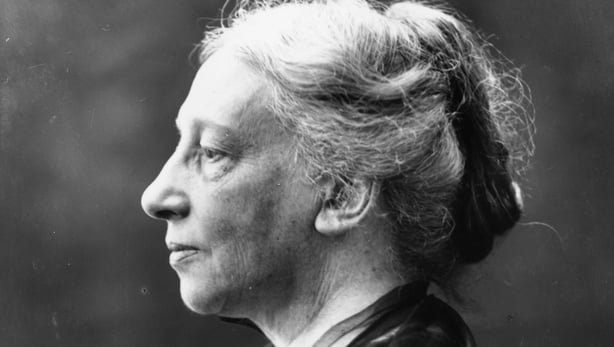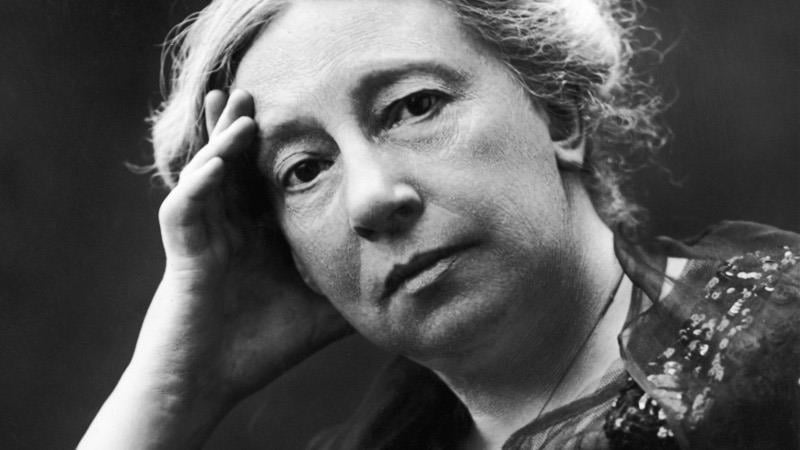Over the coming weeks, RTÉ Culture will present a series of five early short stories written by Lady Augusta Gregory (1852-1932) - these tales, Lady Gregory's only known efforts at short fiction, offer a remarkable insight into one of Ireland's most important literary figures.
Below, James Pethica, who has edited a pair of volumes of Lady Gregory's writings, introduces the series.
Augusta Gregory had just turned fifty years old in 1902 when the publication of Cuchulain of Muirthemne —her rendition of the Táin Bó Cúailnge into 'Kiltartan' English—and then the first production of Cathleen ni Houlihan, which she had co-written with W.B.Yeats, confirmed her arrival as a significant creative figure in the Irish literary movement.
As she later recalled, it was only after reading her first draft chapters of Cuchulain that Yeats "came to look on me as a fellow writer." But she had made numerous efforts to find outlets for her creative abilities in the years before meeting Yeats, earning enough of a reputation in London society for her political journalism, travel articles, and other occasional writings, to have been praised by Oscar Wilde in 1887 for her "clever pen".
Amongst the most significant and surprising of these early writings are five short stories, Lady Gregory’s only known efforts of short fiction. Three of these, written under the pseudonym "Angus Grey" in summer 1890 or soon afterwards, are set in Ireland, and show her questioning her cultural and political loyalties in the face of the massive social and political changes then under way in the wake of the Land War and with Home Rule seemingly imminent.
Each story centres on the extent to which an English or Anglo-Irish 'outsider' can really understand or be accepted by the Irish country people, and they reflect Gregory’s anxieties as to whether she could - or should - identify herself fully as "Irish" given her position as an Ascendancy landlord. Her adoption of a pseudonym for the stories suggests she had significant reservations about openly acknowledging her authorship of such self-evaluative and conflicted work - especially, perhaps, in London, where the interest in and sympathy they display for her Irish subject-matter might have been negatively viewed by some of her British establishment friends.

(Pic: George C. Beresford/Beresford/Getty)
Like the Bronte sisters, she used her own initials for her nom de plume, and her choice of "Angus Grey" was presumably a deliberate echo of the title of Anne Bronte’s novel Agnes Grey - in which a young woman without means or connections is obliged to become a governess, and discovers the lack of empathy and insight in those she works for, and the vulnerability of women in her position. The allusion reflects a highly self-conscious degree of craft and sense of context on Gregory’s part, and suggests the extent to which she may have conceived all three of the stories as meditations, above all, on the possibilities for women’s happiness, autonomy and secure social and cultural positioning.
These "Angus Grey" stories confirm that Gregory had begun to find her key later subject matter in the rural neighbourhood around her at Coole Park, and had also started the questioning that would lead her to become a nationalist, well before she was galvanized into prominence through her relationships with Yeats and Douglas Hyde and her participation in the Irish literary movement.
Each story centres on the extent to which an English or Anglo-Irish 'outsider' can really understand or be accepted by the Irish country people.
Another story, A Lily, Azure, set in Italy, was likely her first effort in the genre. Published anonymously in 1890, it has only now been rediscovered. Written in the tenth year of Gregory’s marriage and less than two years before she was widowed, it draws on her recollections of travelling in Italy as a single young woman in the late 1870s. The narrator - a young Englishman who is again an ‘outsider’ - learns by accident that a prominent titled woman has retained her love for a man, now dead, even though she had insisted they could not consummate their relationship because she was married. The story embodies a frequent concern in Gregory’s work with the "heart secret", and with whether following one’s heart or one’s head is the best choice for a woman.
Dies Irae, apparently her last short story, set in London and published in 1894, likewise centres on an outcome in marriage and love—but here for a woman who has broken, rather than submitted to, social convention.
The three "Angus Grey" stories are included in Lady Gregory’s Early Irish Writings 1883-1893, edited by James Pethica; A Lily, Azure and Dies Irae are reprinted for the first time in Lady Gregory’s Shorter Writings, 1882-1900, also edited by James Pethica, and published by Colin Smythe.

